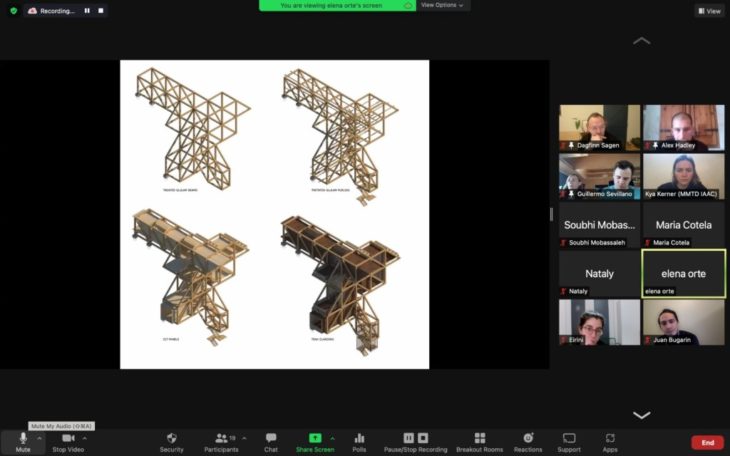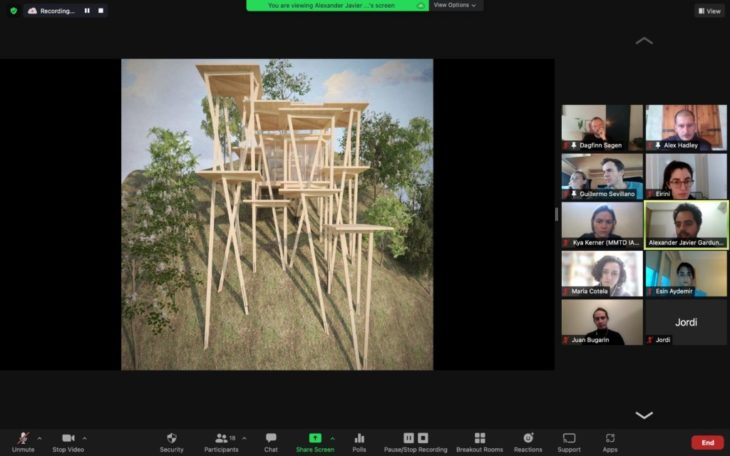The inaugural semester of MMTD concluded with a bold vision of new wooden typologies
The Master in Mass Timber Design (MMTD), the new online master program from IAAC Valldaura Labs, held its first final review over zoom just before the winter break. This module was focused on the research and practice of mass timber design at a small scale. From a singular house to a series of installations and pavilions, students were introduced to the basic topics of structure, thermal performance, assembly processes, digital manufacturing and robotics in mass timber design. By harnessing the lessons and experiences of their professors, these students created immersive and extensively detailed proposals for their own single housing proposals using mass timber. With the help of studio professors Elena Orte and Guillermo Sevillano of Suma Arquitectura, this year’s MMTD students created an excellent series of typological explorations investigating what the future of wood materiality in architecture looks like.
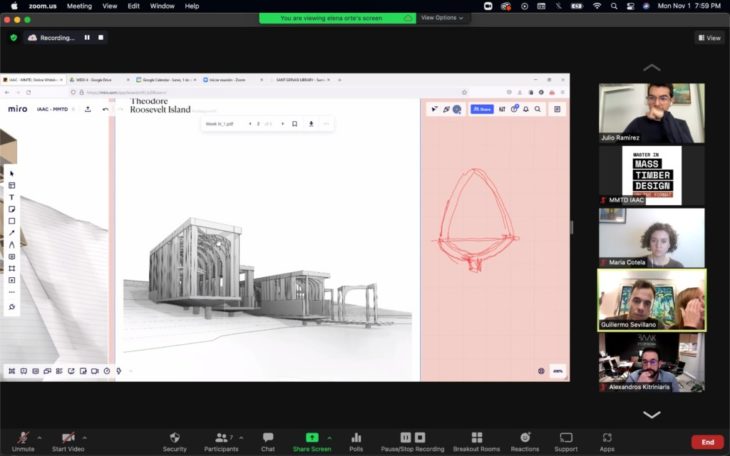
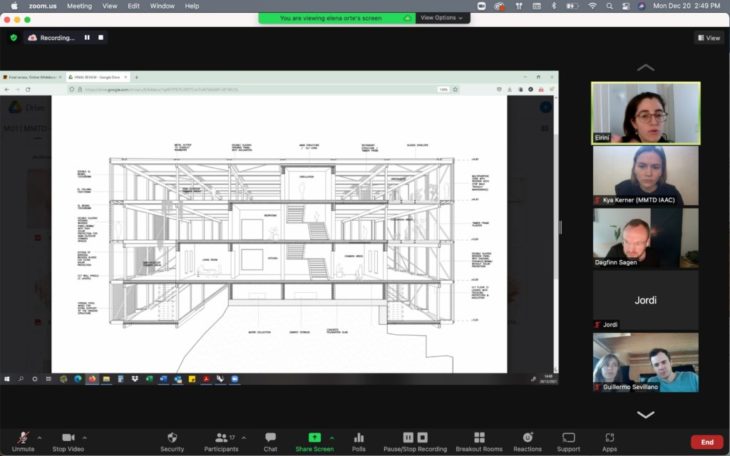
Suma Arquitectes led the students through a challenging semester with professional feedback and creative discussions
Extrapolating and elaborating on the structural elements of any given design is a specialty of Suma Arquitectes, and the work of the studio they run is no different. Each student focused on how the structural wooden components could be expressive of a unique spatial experience or programmatic need. From delicately woven nests made from thin GLT elements, to fanning panels of CLT creating a shell structure of tessellating wood. Projects were specifically designed to propose a new tectonic regime or material typology that could be harnessed through mass timber. Due to the smaller scale of the prompt, these proposals ended up impressively detailed, as seen in the final renderings. New spaces and experiences can be imagined once this new materiality is harnessed.
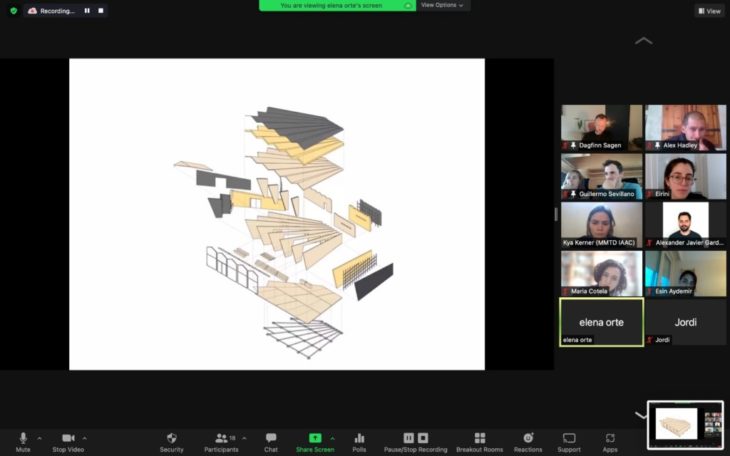
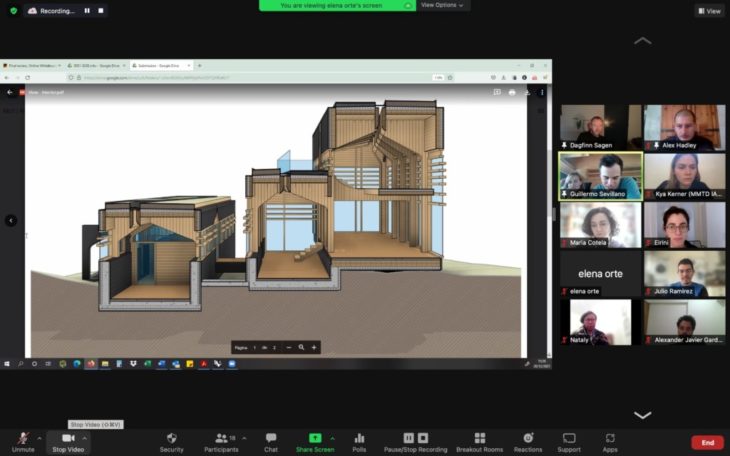
Final review previews next semesters work, with Dagfinn Sagen and Mina Riska
Jury members Dagfinn Sagen and Alex Hadley provided feedback and critique of the proposals, resulting in exciting ideas for what the next evolution of each project might be. Many proposals dug into the social, economic and political consequences of their designs, weaving cultural and architectural information cohesively into their presentations. One standout feature of the final review was how diverse each proposal was from the next, displaying clearly just how far we have to go until we exhaust the potential of mass timber designed buildings. The next semester has already begun, and professors Mina Riska and Dagfinn Sagen will help the students raise the scale of their designs to collective housing projects.
